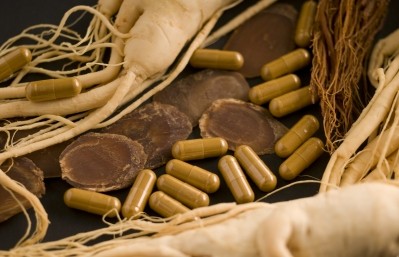A century of the sunshine vitamin part II: Towards new benefits and dosages

“What is truly novel about our recent learnings on the power of vitamin D is the fact human health seems completely interdependent on our ability to maintain sufficient vitamin D levels,” Dr. Ken Redcross, scientific advisor to the Organic & Natural Health Association, told NutraIngredients-USA.
In fact, the science now recognizes that nearly all tissues and cells in the body have vitamin D receptors, and continues to link vitamin D – or alternatively its deficiency – to a range of additional health outcomes related to brain health, mood, immunity and metabolic function.
Beyond bone benefits
In his recent review on the 100th anniversary of the discovery of vitamin D, Dr. Michael Holick – an endocrinologist who isolated the circulating and active forms of vitamin D in humans – says that the vitamin has yet to reveal all its biologic functions and clinical potential.
“I think that the most compelling benefit of vitamin D separate from calcium metabolism and bone health is its effect on the immune system reducing risk for autoimmune disorders like psoriasis, rheumatoid arthritis and type 1 diabetes and acute infections including COVID-19,” he told NutraIngredients-USA.
At the height of the pandemic, attention turned to the role of vitamin D in reducing inflammation and supporting immune function to moderate the severity of viral respiratory infections. This interest is bolstered by an ever-growing number of cohort studies, clinical trials and meta-analyses collected by the Council for Responsible Nutrition (CRN) Vitamin D & Me! awareness-raising campaign.
Dr. Redcross highlighted a study published last month substantiating vitamin D supplementation as critical in preventing the risk of mortality and admission to intensive care units in patients with COVID-19. Another review of 4,599 veterans inversely correlated vitamin D dosage with COVID-19 incidence and mortality, particularly in black veterans.
“If there was one major lesson that has been learned in the past few years, it is that people of color are at far higher risk of having dangerously low vitamin D levels and two to three times more likely to suffer from the chronic diseases that continue to place individuals at risk of serious illness or death from COVID-19,” Dr. Redcross added.
Similarly, early 20th century research found that children of color in the Columbus Hill district of New York City were at a higher risk for developing rickets – the rare skeletal disease brought on by lack of sunlight exposure.
A nutrient of public health concern
According to retail data firm SPINS, vitamin D dollar sales were up 44% at the beginning of 2021 before moderating to 11.4% growth a year later. For the 52 weeks leading up to the start of 2023, SPINS reported an 11.1% drop in sales, reflecting a consumer shift to other health areas like performance, immune health and mood support.
“Even with this decline, we expect to see bone health experience some serious growth this year,” Haleigh Resetar, corporate communications specialist at SPINS told NutraIngredients-USA, anticipating that active consumers will seek out bone and joint health supplements to protect from the impacts of exercise.
In its 2022 Consumer Survey on Dietary Supplements, CRN suggests that 50% of all supplement users are taking vitamin D but emphasizes that deficiency of this essential nutrient continues to be widespread.
“Dietary studies have repeatedly shown many people still fall short of obtaining adequate levels of vitamin D and may be missing out on health benefits,” said Luke Huber, ND, vice president of scientific and regulatory affairs at CRN. “The most recent Dietary Guidelines for Americans identifies vitamin D as a ‘nutrient of public health concern.’’
Experts agree that vitamin D intake through traditional dietary sources like fatty fish or fortified foods like milk is not sufficient to sustain adequate levels, but medical societies, institutes and academies have yet to reach a consensus on recommended levels.
“The conventional medical community consensus is that a blood serum level of 30 ng/ml is adequate, and at least 40% of Americans are considered deficient with blood serum levels of 20 ng/ml or less,” said Dr. Redcross. “However, the International Scientific Panel of Grassroots Health has determined having levels in the range of 40-60 ng/ml can actually prevent disease. So how much vitamin D3 does one need to attain a sufficient level?”
In search of the dosage sweet spot
To prevent vitamin D deficiency, the Endocrine Society recommends that infants need 400-1000 IUs of vitamin D a day, children 600-1000 IUs and adults 1500-2000 IUs, with obese adults requiring considerably more.
Dr. Holick recommends that his patients take at least 2000 IUs and preferably 3000-5000 IUs daily to maintain a circulating concentration of 40-60 ng/mL. In his review, he points to research showing that the Maasai and Hadzabe hunter-gatherers in Tanzania, who continue to live exposed to the sun as they did 10,000 years ago, maintain average circulating levels of 43 to 46 ng/ml. He himself takes 6000 IUs a day to maintain a level of 72 ng/mL.
“The importance of knowing your vitamin D level cannot be undervalued,” Dr. Redcross said. “Once you know your level, aim for that sweet spot of 40-60 ng/ml and start with 5,000 IU daily with a commitment to test again at six months.”
He noted, however, that people with certain conditions, including primary hyperparathyroidism, sarcoidosis, tuberculosis and lymphoma may be hypersensitive to vitamin D supplementation and are wise to monitor their levels with their physicians. CRN also directs consumers to speak with their healthcare practitioners about the correct dosage to ensure a healthy balance between benefit and safety.
“It is important to note supplementation with a particular dose of vitamin D may not have the same impact across individuals in a population group,” Dr. Huber said. “It may provide benefits to some individuals but may not have as much of an effect in others, depending on the individual’s vitamin D status at baseline, along with other factors (such as absorption, metabolism, and polymorphisms in key vitamin D dependent genes).”
















